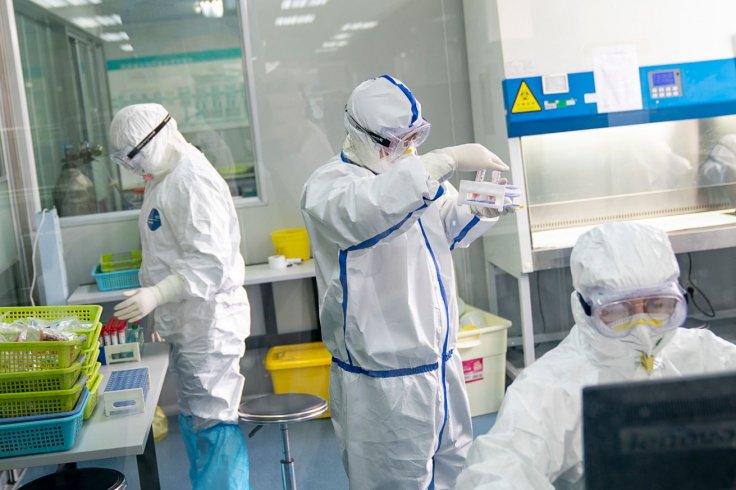As China gets back to its feet after nearly eradicating the deadly COVID-19 outbreak within its borders, the rest of the world is struggling to contain the spread of the disease. Europe, which the WHO has declared as the new epicentre of the pandemic, is reporting cases by the thousands every day. At a time like this when accurate diagnosis can curtail the coronavirus' spread, a new study suggests that doctors may be missing an important symptom.
According to the study by researchers from the Wuhan Medical Treatment Expert Group for COVID-19 in China, several patients diagnosed with the coronavirus present digestive symptoms such as diarrhea, vomiting and anorexia without any respiratory symptoms.
While it has been widely understood that patients exhibiting respiratory symptoms are the most likely ones to be considered as potential COVID-19 cases, the scientists suggest that broadening the diagnostic approach towards spotting the disease is important. "The index of suspicion may need to be raised earlier in at-risk patients presenting with digestive symptoms rather than waiting for respiratory symptoms to emerge," the authors wrote.

Studying COVID-19 patients with digestive symptoms
For the study, the researchers enrolled 310 confirmed patients with COVID-19. All the recruited patients belonged to three hospitals in the Hubei Province—Huanggang Central Hospital, Wuhan Hanan Hospital and Wuhan Union Hospital—and who were admitted between January 18 to February 28, 2020.
To be included in the study, the patients had to meet two inclusion criteria decided upon by the authors. First, was the confirmation of the patients' infection status using real-time Reverse transcription-polymerase chain reaction (RT-PCR)—a laboratory technique—and diagnosis of clinical characteristics as per WHO's interim guidelines.

Secondly, all the patients had to undergo a computerized tomography, and a complete battery of standard laboratory tests such as blood biochemistry, complete blood count, and urinalysis, among others. Patients who did not satisfy both the criteria were not included in the study, which resulted in a final analysable population of 204 patients (107 men and 97 men with an average age of 54.9 years). Regular follow-up of data was carried out till March 5, 2020.
Outcome more fatal
In general, patients with digestive symptoms exhibited a wide range of manifestations such as anorexia (83 cases), diarrhea (29 cases), vomiting (8 cases), and abdominal pain (4 cases). A crucial finding was that in 99 patients or 48.5 percent of the population, digestive symptoms were the primary complaint with which they were presented to the hospital.
"This is important because if clinicians solely monitor for respiratory symptoms to establish case definitions for COVID-19, they may miss cases initially presenting with extra-pulmonary symptoms, or the disease may not be diagnosed later until respiratory symptoms emerge," the study said. According to laboratory data, no significant liver damage was found in patients participating in the study.

Unlike patients who showed no digestive symptoms, the study found that in those with such indicators, the duration from the onset of the disease to admission was notably longer, (i.e.) nine days as against 7.3 days for patients with respiratory symptoms. However, one finding went against the accepted norm of diagnosis. It was found that in seven cases, only digestive symptoms were noticed with no respiratory symptoms.
With the progression in the severity of the disease, a marked worsening of the digestive symptoms was observed. The researchers also suggested that successful treatment and discharge was more likely in patients without digestive symptoms (60 percent) in comparison to those with it (34.3 percent).
Reason behind the severity of the disease in such patients
On the reason underlying a more fatal outcome for patients with digestive symptoms, the study hypothesizes that the viral load and the rate of replication of the pathogen within the gastrointestinal tract could be one.
Also, the absence of initial pulmonary symptoms may lead to such patients seeking medical attention at a progressed stage of infection the doctors deliberated. This could reduce the window within which critical care can be provided to cure the disease at a preliminary stage.
However, the authors submit that the study is not without limitations. For example, the sample size being really small could cause bias and reduce the ability to generalize the results. Secondly, they declared that RNA of SARS-CoV-2 in the patients' stool was not tested. Therefore, it limited the correlativity between symptoms and the presence of viral RNA in the stool. "Future research needs to focus on this relationship in order to further explore the prognostic value of stool testing as both a diagnostic and prognostic indicator in COVID-19," they wrote.









